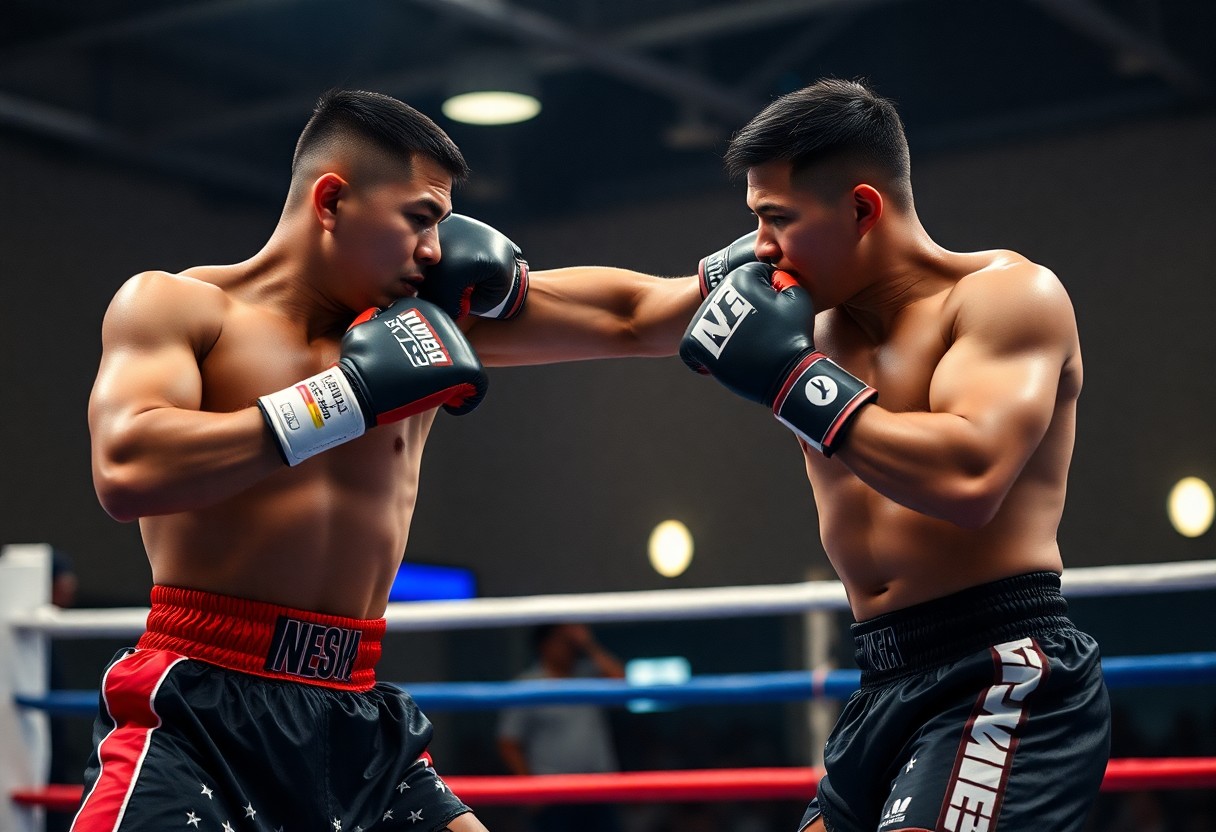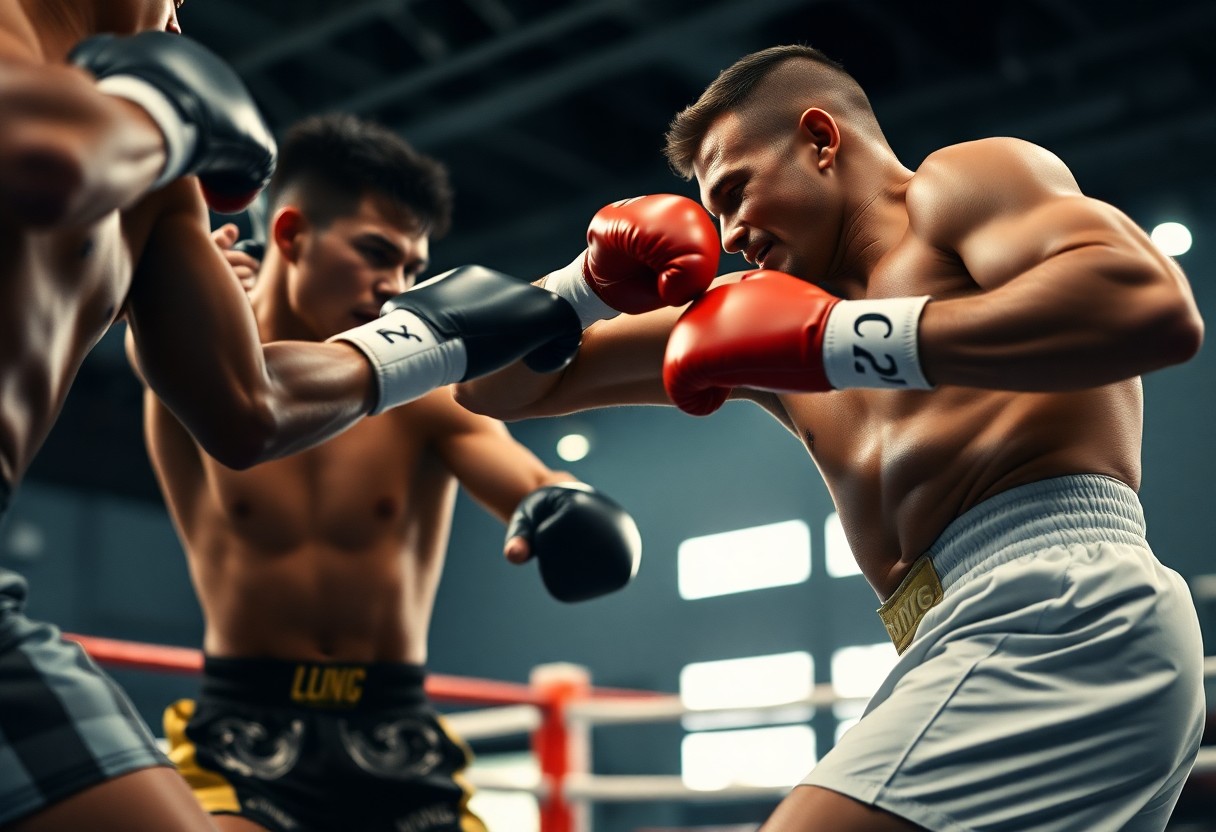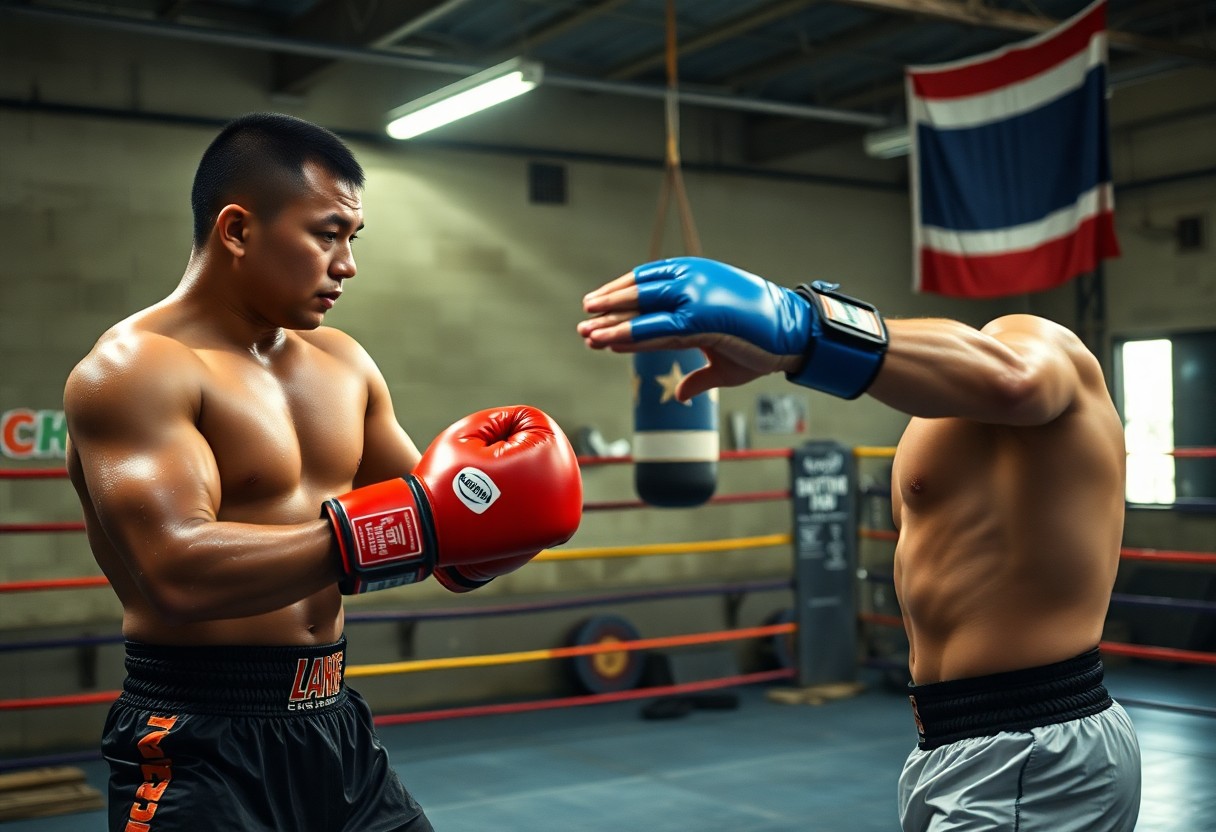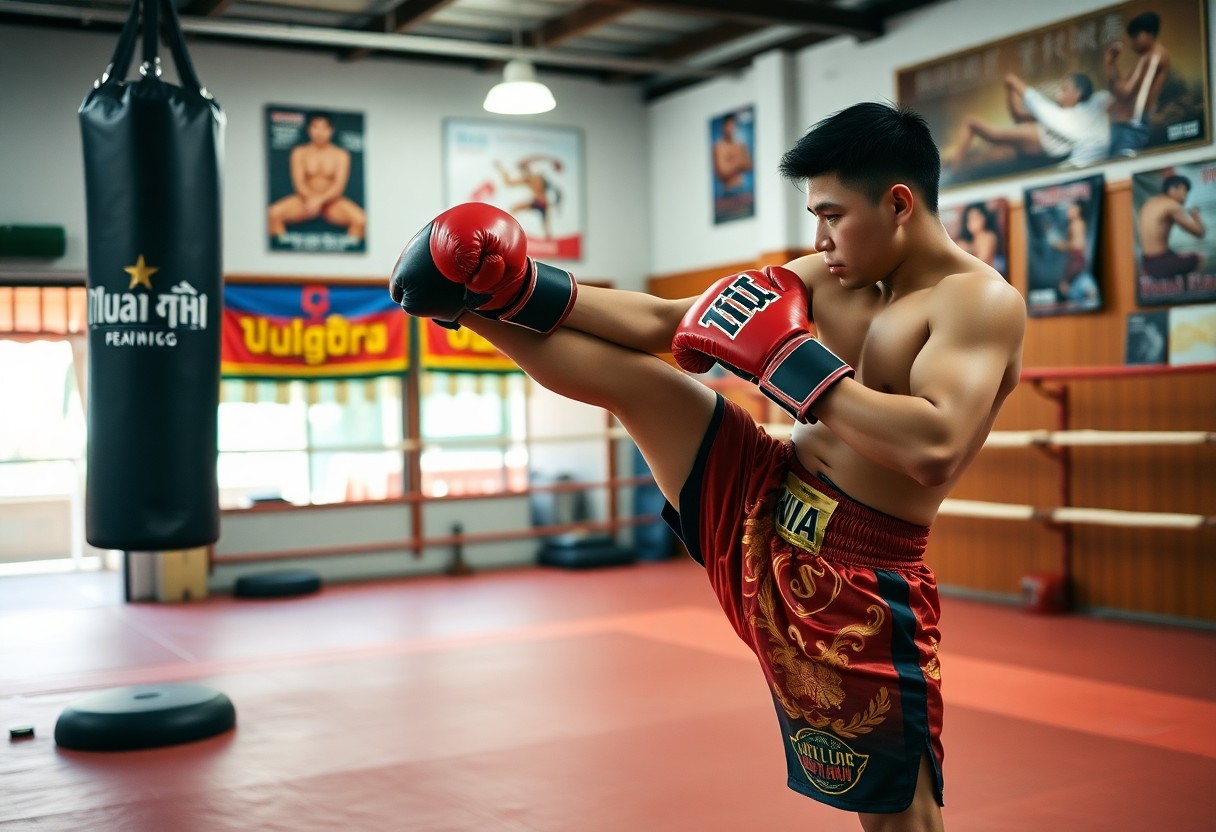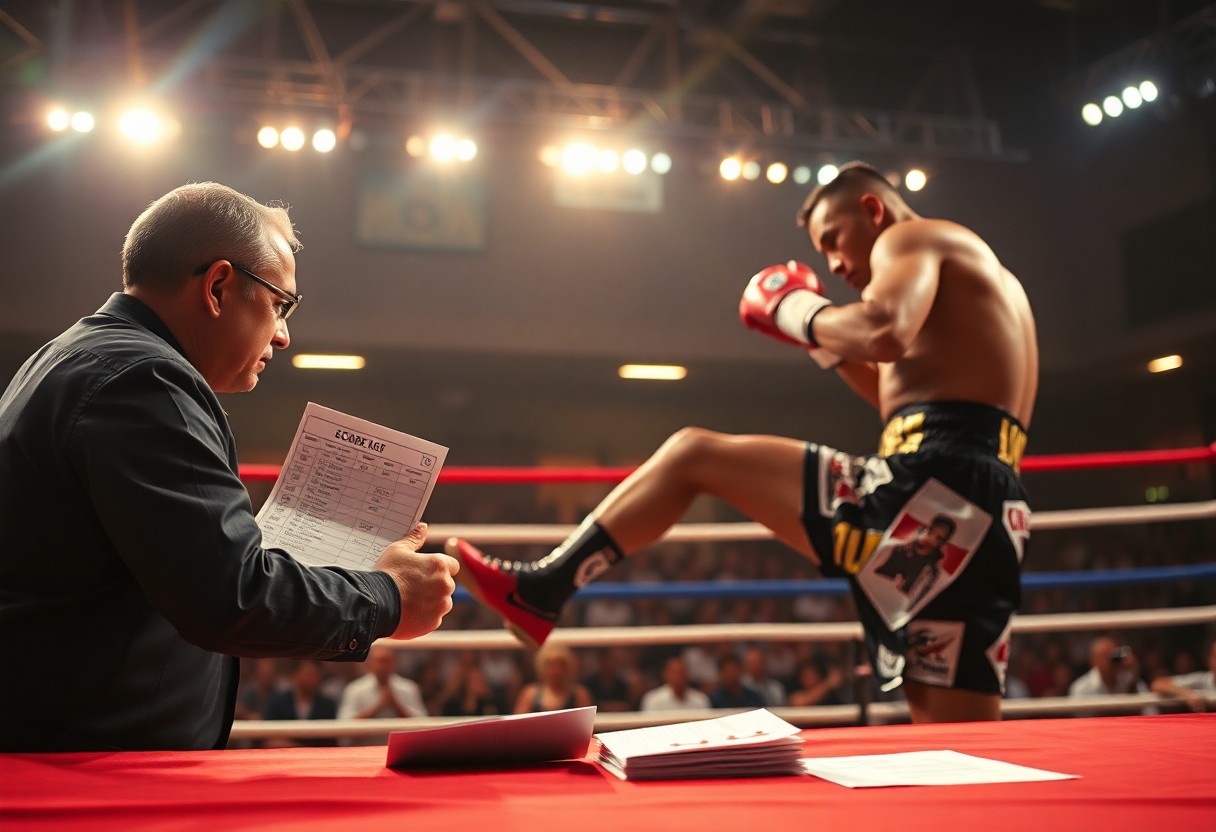
You can enhance your betting strategy by grasping the intricacies of Muay Thai scoring. Each bout is judged based on factors like effective striking, aggressiveness, and ring control, creating a dynamic scoring system that can favor different fighters. Understanding how judges evaluate technique and damage provides bettors with an edge, allowing for more informed decisions. With knowledge of how each strike and clinch can impact scores, you can align your bets with the most promising outcomes, increasing your potential returns in this exciting combat sport.
The Basics of Muay Thai Scoring
Muay Thai scoring is intricate, relying on multiple criteria to evaluate fighter performance during a match. Each round is judged independently, with a focus on the effectiveness and impact of strikes. Points are awarded based on how well a fighter executes techniques such as punches, kicks, elbows, and knee strikes. Judges score on a 10-point must system, with the winner of the round receiving 10 points and the loser a maximum of nine, reflecting the level of dominance. Understanding these fundamentals is imperative for accurately assessing fight outcomes, especially when placing wagers.
Understanding Scoring Criteria
Scoring in Muay Thai hinges on specific criteria, including the effectiveness of strikes, aggressiveness, and control of the ring. Judges assess the impact and frequency of strikes landed on the opponent while considering defensive skills. A fighter who not only lands effective strikes but also displays superior ring control generally garners higher scores.
Key Elements of a Fight
Several key elements play a pivotal role in a Muay Thai bout, influencing judges’ decisions directly. The quality and impact of strikes, frequency of attacks, and the ability to counter effectively shape a fighter’s performance. Additionally, a fighter’s attitude in the ring, including their ability to remain calm under pressure and adapt to opponents, can swing the judges’ favor.
Effective strikes include powerful knee techniques and clean elbow strikes, which are more appreciated than mere volume of punches. The impact of strikes is critical—landed shots that visibly stagger an opponent often weigh more heavily than numerous punches lacking in force. A fighter who exhibits consistent ring control—a high guard, cornering the opponent and dictating pace—also strengthens their scoring potential. These elements create a composite picture of each fighter’s performance, guiding not only the judges but also informed bettors seeking to make calculated wagers.
The Importance of Effective Strikes
Effective strikes serve as a significant factor in Muay Thai scoring, directly influencing judges’ assessments. A striking technique can yield higher points if executed with power, accuracy, and timing. Fighters utilize elbows, knees, kicks, and punches to land damaging blows, enhancing their scoring potential. Winning a round often hinges on the ability to deliver these effective strikes consistently, which can sway judges in favor of one fighter over another. This understanding is vital for bettors aiming to predict match outcomes accurately.
Different Types of Strikes
In Muay Thai, fighters employ various striking techniques, each with specific impacts on scoring. The primary types include:
- Punches – Standard boxing strikes for quick damage.
- Knees – Powerful in close-quarters, igniting audience excitement.
- Elbows – Cutting strikes, often resulting in significant injuries.
- Kicks – Ranged attacks, particularly to the legs and body.
- Thete – Unique techniques that add flair and surprise.
This variety underscores the strategic nature of scoring in matches.
| Type of Strike | Scoring Potential |
| Punches | Moderate |
| Knees | High |
| Elbows | Very High |
| Kicks | High |
| Thete | Varied |
Impact and Control
Impact and control within a fight directly correlate with scoring. A fighter not only needs to land effective strikes but also maintain dominance throughout the bout. Judges favor those who dictate the pace and rhythm, demonstrating control over their opponent. A well-placed strike that visibly impacts the adversary can swing judges’ opinions and sway scoring in favor of the more dominant fighter.
For example, a fighter who delivers a powerful kick followed by controlled movement demonstrates both tactical acumen and strength, factors that resonate with judges. Impactful strikes that visibly shake or destabilize an opponent recall attention, enhancing scoring opportunities. When a fighter is consistently landing strikes while imposing their game plan, it cultivates a narrative of control, making it more likely to secure a favorable score. Effective combinations and ring control can thus be decisive in close contests, highlighting why bettors must analyze both strike effectiveness and control when placing wagers.
Judges’ Perspectives and Their Roles
Judges play an vital role in Muay Thai matches, shaping the outcome based on their interpretations of fighter performance. With a minimum of three judges scoring each fight, the collective decision reflects their perspectives on factors such as technique, aggression, and scoring strikes. Each judge brings unique experiences and biases, affecting their scoring decisions and ultimately the fight’s results. Understanding their roles and perspectives can give bettors an advantage when analyzing match outcomes.
The Judging Process Explained
The judging process involves a systematic evaluation of each fighter’s performance based on established criteria. Judges assess points for striking accuracy, defensive maneuvers, ring control, and overall effectiveness. Each round is scored individually, with judges assigning 10-point must system scores, where the winner of the round receives 10 points, while the loser typically receives 9 or fewer. This structured approach aims to create a fair assessment of each fighter’s abilities throughout the match.
Insights into Judge Bias
Judge bias can significantly influence scoring outcomes in Muay Thai. Personal preferences, regional styles, and even media portrayals can color a judge’s assessment of performance. Additionally, variables such as a fighter’s popularity or previous match results might sway their objectivity. Studies indicate that judges may lean toward awarding points to fighters exhibiting aggressive strategies, even if technically sound actions by opponents go unnoticed. A bettor who understands these biases can better anticipate scoring tendencies and leverage that knowledge effectively.
With judges often swayed by their own interpretations of aggression, it’s not uncommon for decibel levels in the crowd or local fan favorites to inadvertently skew results. For example, a fighter who relentlessly presses forward might be viewed favorably despite not landing the most effective strikes, showing flexibility in judging criteria. Moreover, judges may also grapple with inconsistent criteria across different bouts, leading to variability. A bettor capitalizing on regional biases or patterns in a judge’s scoring from previous fights may uncover potential betting advantages, allowing for more strategic wagers based on judge tendencies.
Strategies for Bettors
To gain an edge in betting on Muay Thai fights, employing strategic approaches is key. Understanding not only the fighters but also their historical performance and fight styles can significantly impact betting decisions. Focus on recent match outcomes, injuries, and training camp changes, as these factors can influence performance. Analyzing betting lines and historical odds can also provide insights into potential value bets, maximizing potential profit while minimizing risk.
Analyzing Fighter Styles and Strengths
Every fighter brings a unique style, which can heavily influence match outcomes. Strikers may win points with powerful strikes, while grapplers often control the fight’s pace through clinch work. Assessing each fighter’s strengths—such as speed, endurance, and adaptability—allows bettors to predict potential match dynamics, considering how these styles match up against one another. Understanding these nuances can lead to well-informed betting choices that align with fighters’ proven abilities.
Recognizing Scoring Trends
Identifying scoring trends is necessary in making informed bets. Historical data has shown that judges may favor specific techniques or styles over others in different regions or types of competitions. Fighters who consistently land effective strikes or demonstrate superior ring control often receive higher scores, regardless of the match’s perceived flow. Keeping tabs on recent fight analyses and judges’ tendencies can inform betting decisions, allowing bettors to anticipate how judges might score upcoming matches.
Scoring trends can shift based on evolving fight philosophies and rule changes within Muay Thai. For example, increased emphasis on effective aggression in certain leagues can lead judges to favor fighters who push the action rather than those who may be more defensive. Historical data analysis reveals patterns, such as judges’ preferences for knee strikes over low kicks or the significance placed on clinch control. Tracking these trends, bettors can capitalize on odds that may undervalue fighters who excel in currently favored scoring techniques, enhancing profitability in their betting strategies.
Common Misconceptions about Scoring
Many bettors misunderstand the scoring system in Muay Thai, leading to miscalculations in their wagers. A frequent misconception is that a knockdown guarantees a round victory, while in reality, judges consider the overall performance, including effective techniques, aggression, and control of the ring. Additionally, not all strikes are valued equally; judges prioritize clean, impactful strikes over volume or missed attempts. Understanding these nuances can drastically change how one approaches betting on fights.
Dispelling Myths
An often-held myth is that judges only value striking in scoring, neglecting clinch work or defensive skills. In practice, clinching techniques and the ability to evade strikes significantly influence judges’ scores. Fighters showcasing a balance of offense and defense are more likely to win rounds despite not delivering a higher number of strikes.
Understanding Fight Dynamics
Fight dynamics play a pivotal role in scoring consistency in Muay Thai. Judges analyze how fighters engage not just through scoring hits but also by assessing control and ring generalship. A fighter may land fewer strikes yet dominate with movement and positioning. For instance, effective movement can minimize damage while creating openings, which often scores favorably in the judges’ eyes. Moreover, the pace of the fight influences perception; a fighter maintaining pressure may sway judges, reinforcing that effectiveness is not merely about numbers but the quality of engagement.
Resources for Bettors
Accessing the right resources can significantly enhance betting strategies in Muay Thai. Utilizing various platforms and tools for analysis, along with insightful readings, can equip bettors with the necessary knowledge to make informed decisions. From statistics to historical fight data, the landscape is filled with invaluable resources that cater to the analytical demands of the sport.
Tools and Platforms for Analysis
Platforms such as FightMetric and StatSnaps offer in-depth statistical analysis of fighters, showcasing data on strikes landed, fight history, and other performance metrics. These tools enable bettors to assess fighters’ strengths and weaknesses comprehensively, allowing for informed betting decisions. Additionally, following social media accounts of analysts can provide real-time insights and predictions, which are important during fight nights.
Recommended Reading
Books and articles about Muay Thai can deepen understanding of the sport’s intricacies and intricacies of scoring. Titles like “Muay Thai: The Essentials” and “The Science of Striking” break down techniques and the scoring process, offering practical insights for bettors. Keeping updated blogs or newsletters about upcoming fights can also provide important strategies and predictions from experienced analysts.
Diving deeper into recommended readings reveals a wealth of knowledge that can refine betting strategies. Many publications detail fight analyses, examining past bouts’ outcomes and scoring nuances, which can illuminate patterns to look for in future matches. Authors often incorporate interviews with fighters and trainers, enhancing the understanding of how fighters approach scoring, and equipping bettors with nuanced perspectives that statistics alone may not convey.
Conclusion
Summing up, a solid understanding of Muay Thai scoring can significantly enhance a bettor’s edge in the fight game. Familiarity with judges’ criteria, techniques rewarded, and the overall fight dynamics allows for more informed wagering decisions. By analyzing fighters’ styles and recent performances through the lens of scoring, bettors can identify value in odds that may not reflect a fighter’s true potential. Ultimately, mastering scoring nuances is crucial for anyone looking to succeed in betting on Muay Thai matches.
Q: How is scoring determined in Muay Thai fights?
A: Scoring in Muay Thai is based on several factors including the effectiveness of strikes, control of the ring, and the overall impact of techniques. Judges award points for clean hits, particularly with elbows and knees, while also considering aggression and defense. Each round is scored individually, contributing to the overall decision.
Q: What are the key techniques that can earn points in scoring?
A: Effective techniques that contribute to scoring include punches, kicks, elbows, and knees. Strong knee strikes and clean elbow strikes often score higher due to their impact. Additionally, clinch work that demonstrates control can also influence scoring positively.
Q: How can understanding scoring improve a bettor’s strategy?
A: By comprehending the scoring criteria, bettors can make informed predictions about fighters’ strategies and potential outcomes. Recognizing which fighter excels in the aspects that judges prioritize can lead to more accurate betting choices based on likely judges’ decisions rather than just overall fight performance.

